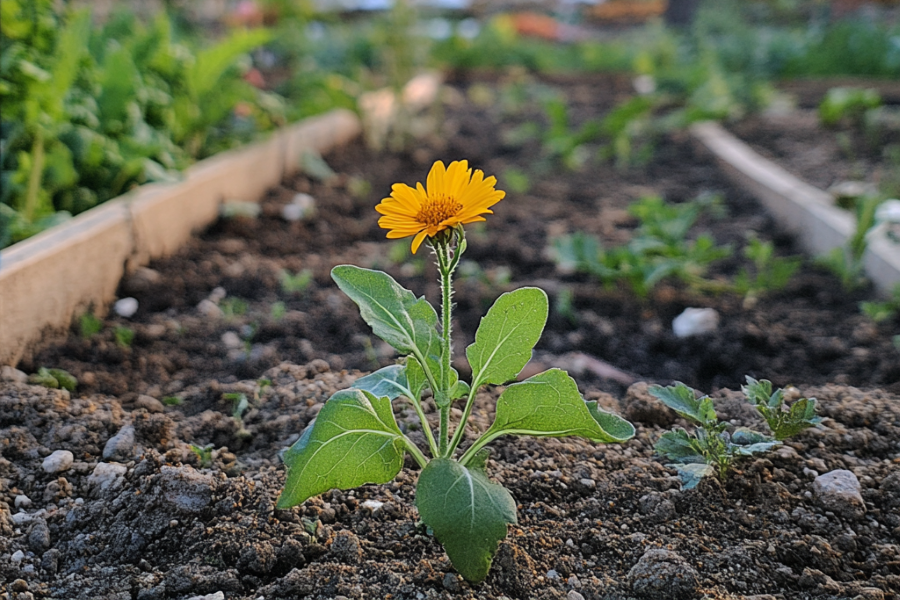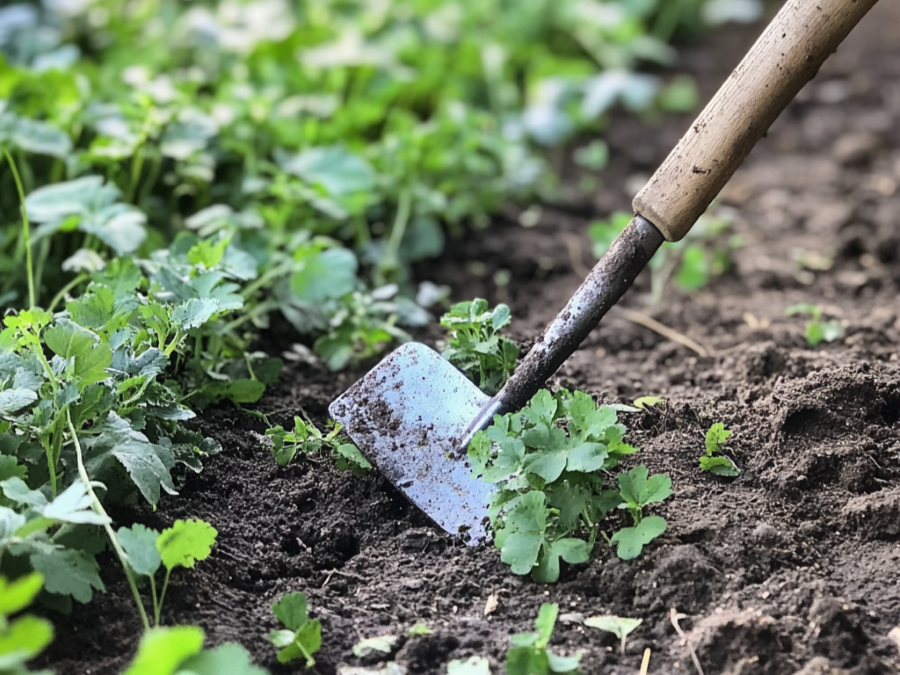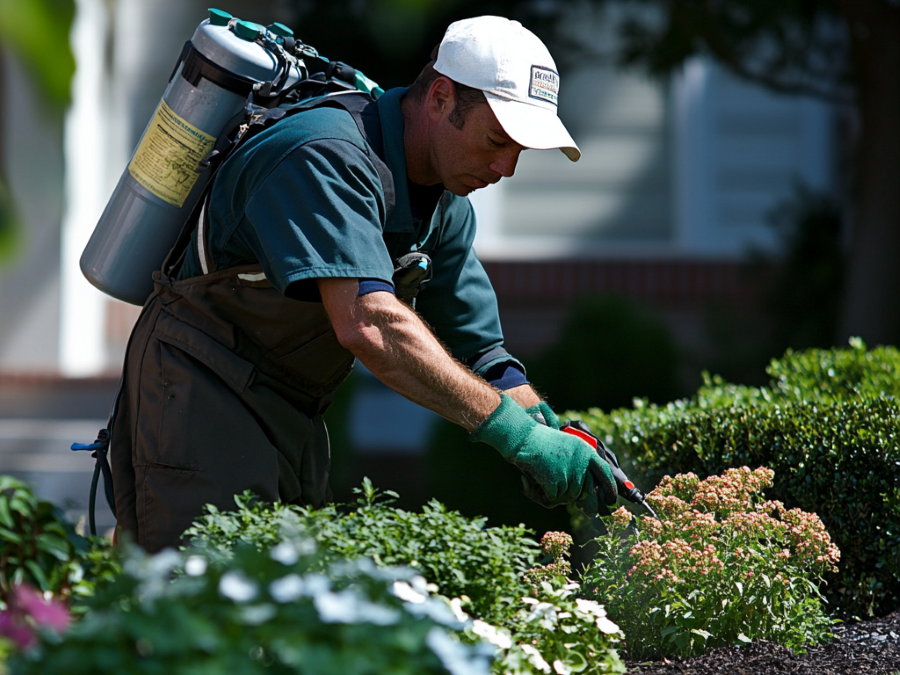Weed Control: Prevention and Removal of Invasive Plants for a Healthier Landscape
Introduction: The Battle Against Unwanted Vegetation
Weeds—those persistent invaders—can wreak havoc on your landscape, robbing your desirable plants of essential nutrients, sunlight, and water. Without proper weed control methods, your garden or lawn can quickly become overrun, leading to reduced biodiversity, poor plant health, and an unsightly appearance. Fortunately, effective strategies exist to prevent and remove invasive plants, keeping your outdoor space thriving and beautiful throughout the seasons.
At Arborist Now, we understand the importance of sustainable land management and effective weed control. Whether you’re dealing with stubborn perennial weeds like dandelions and bindweed or fast-spreading annual invaders such as crabgrass and chickweed, our expert strategies will help you reclaim your landscape from these unwanted plants.
Understanding Weeds and Their Impact on Your Landscape

What Exactly Are Weeds?
Weeds are simply plants growing where they’re not wanted. They typically grow aggressively, often outcompeting desirable vegetation for limited resources. These opportunistic plants reproduce rapidly and spread through various mechanisms including:
- Windborne seeds
- Underground rhizomes
- Surface-level runners (stolons)
- Root fragments that regenerate
- Seeds that remain viable in soil for decades
This reproductive versatility makes weeds notoriously difficult to eliminate completely without a strategic approach.
How Weeds Harm Your Landscape
Invasive weeds impact landscapes in several significant ways:
- Resource Competition – They aggressively steal nutrients, water, and sunlight from desirable plants, stunting growth and reducing yields in gardens.
- Biodiversity Reduction – Weeds can rapidly outcompete native species, leading to a less diverse ecosystem and disrupting natural habitats for beneficial insects and wildlife.
- Soil Health Degradation – Some weeds, like nutsedge and quackgrass, deplete the soil of essential nutrients and alter soil structure, making it harder for other plants to thrive.
- Pest and Disease Proliferation – Many weeds harbor pests and plant diseases, creating reservoirs that can spread to your valuable landscape plants.
- Property Value Reduction – An unkempt, weed-filled landscape can significantly reduce curb appeal and property value.
- Allergenic Properties – Certain weeds like ragweed produce potent allergens that can trigger respiratory issues for property owners and visitors.
Proven Weed Prevention Strategies for a Thriving Landscape

1. Strategic Mulching for Effective Weed Suppression
Mulching is one of the most effective and natural ways to prevent weeds from taking over your garden beds. Quality mulches not only block sunlight from reaching weed seeds but also enrich the soil as they decompose, creating a win-win situation for your landscape.
Best Practices for Mulching:
- Apply 2-4 inches of organic mulch around plants to prevent weed germination.
- Use landscape fabric beneath mulch in heavily weed-prone areas for added protection.
- Replenish mulch annually as it breaks down and becomes incorporated into the soil.
- Consider pine straw for acid-loving plants, wood chips for perennial beds, and compost for vegetable gardens.
- Avoid piling mulch directly against plant stems or tree trunks to prevent rot and disease.
2. Maintain Healthy, Balanced Soil
Healthy soil creates an environment where desirable plants thrive while many weeds struggle. By focusing on soil health, you’ll naturally discourage weed growth while fostering strong plant roots and improving resistance against invasive species.
Soil Management Techniques:
- Regularly test soil pH and nutrient levels (aim for testing every 2-3 years).
- Add compost or organic matter in spring and fall to maintain soil fertility and structure.
- Consider adding beneficial microorganisms to improve soil biology.
- Practice crop rotation in vegetable gardens to disrupt weed cycles.
- Avoid over-tilling, which can bring dormant weed seeds to the surface and disrupt soil structure.
3. Implement Smart Planting Techniques
The way you arrange and space your plants can significantly impact weed pressure in your landscape. Dense, strategic planting reduces the space and resources available for weeds to establish.
Effective Planting Strategies:
- Companion Planting – Pair plants like marigolds and nasturtiums with vegetables to naturally repel weeds and pests.
- Ground Covers – Utilize low-growing plants like creeping thyme, sweet woodruff, or clover to provide natural weed suppression.
- Dense Planting – Space plants closely enough to shade the soil once mature, making it difficult for weed seeds to germinate.
- Succession Planting – Plan continuous crops in vegetable gardens to minimize bare soil where weeds can establish.
4. Utilize Physical Barriers Effectively
Physical barriers provide a simple but effective line of defense against persistent weeds, especially in high-traffic areas and ornamental beds.
Barrier Options:
- Install professional-grade landscape fabric under gravel pathways or mulched garden beds.
- Use steel, stone, or plastic edging to prevent lawn grasses from spreading into flower beds.
- Consider raised garden beds with weed barrier fabric underneath to limit weed intrusion.
- Use newspaper or cardboard as a biodegradable weed barrier beneath mulch layers.
5. Proper Lawn Care Practices for Natural Weed Prevention
A thick, healthy lawn is your best defense against lawn weeds. When grass grows densely, it naturally prevents weed seeds from reaching the soil and establishing.
Lawn Maintenance for Weed Prevention:
- Mow at the correct height (typically 3-4 inches for most cool-season grass types).
- Water deeply but infrequently (1-1.5 inches per week) to encourage strong root growth.
- Aerate compacted soil annually to improve oxygen and water penetration.
- Overseed thin areas in fall to fill in bare spots before weeds can establish.
- Follow a seasonal fertilization schedule tailored to your specific grass type and climate.
Effective Weed Removal Techniques for Established Problems

1. Manual Weed Removal Methods
Hand-pulling remains one of the most effective and environmentally friendly methods for controlling weeds, especially in smaller garden areas and for isolated weed problems.
Tips for Manual Weed Removal:
- Pull weeds after rain or irrigation when the soil is moist and roots release more easily.
- Use proper technique—grasp weeds at their base and pull slowly to remove the entire root.
- Invest in quality ergonomic weeding tools like hori hori knives or stand-up weeders for deep-rooted species like dandelions and thistles.
- Remove weeds before they flower and set seed to prevent future generations.
- Dispose of removed weeds properly, especially if they’ve gone to seed (avoid composting these).
2. Mechanical Weed Control Methods
For larger areas or more established weed problems, mechanical methods can provide efficient control without chemicals.
Effective Mechanical Approaches:
- String Trimmers/Weed Whackers – Ideal for cutting down large patches of weeds in rough areas
- Flame Weeding – Using a propane torch to kill weeds on driveways and patios without chemicals
- Hoeing and Cultivation – Regular light hoeing severs young weeds at the surface before they establish
- Power Tillers – For preparing new beds, though use sparingly to avoid bringing new weed seeds to the surface
- Weed Steamers – Hot water/steam systems that kill weeds without chemicals
3. Natural & Organic Herbicide Options
When manual and mechanical methods aren’t sufficient, natural herbicides offer a middle ground before resorting to synthetic chemicals.
Effective Natural Weed Killers:
- Horticultural Vinegar – High-acidity vinegar (20-30%) that works as a contact herbicide but should be used with caution and protective equipment
- Boiling Water – Simple but effective for weeds growing in cracks of sidewalks, driveways, or patios
- Corn Gluten Meal – Acts as a natural pre-emergent herbicide, preventing weed seeds from germinating
- Essential Oil-Based Herbicides – Products containing clove oil, citric acid, or d-limonene offer natural weed control
- Salt Solutions – Can dehydrate weeds but should be used very carefully as they may harm soil structure and nearby plants
4. Responsible Use of Chemical Herbicides When Necessary
While natural methods are preferable, some weed infestations may require targeted chemical intervention, especially for particularly aggressive species like poison ivy or Japanese knotweed.
Guidelines for Chemical Herbicide Use:
- Choose selective herbicides that target specific weed types rather than broad-spectrum options.
- Spot-treat individual weeds rather than broadcasting over large areas .
- Apply during calm, dry weather with temperatures between 65-85°F to prevent drift and ensure effectiveness.
- Always read and follow label instructions precisely regarding mixing, application rates, and safety measures.
- Consider hiring certified professionals for difficult invasive species that require specialized control.
5. Smothering & Solarization Techniques
For severely infested areas that need a fresh start, smothering and solarization can effectively clear large patches of weeds.
Implementation Methods:
- Sheet Mulching – Layer cardboard or newspapers, then compost and mulch to smother existing weeds and create new planting areas.
- Black Plastic Smothering – Cover weedy areas with black plastic for 4-6 months to kill existing vegetation.
- Soil Solarization – Using clear plastic during hot summer months to trap heat and kill weeds and their seeds by raising soil temperature.
- Cover Cropping – Plant dense, fast-growing crops like buckwheat or winter rye to outcompete weeds and improve soil simultaneously.
Long-Term Weed Management and Prevention Strategies

Consistent Maintenance Routines
The key to successful weed control is consistency. Establishing regular maintenance routines will prevent small weed problems from becoming major infestations.
Maintenance Schedule:
- Conduct weekly 10-minute weeding sessions in key areas to stay ahead of invasive growth.
- Perform seasonal landscape inspections to identify and address emerging weed issues.
- Maintain clean edges between lawns and garden beds to prevent creeping weeds.
- Remove spent flowers (deadheading) to prevent seed formation and spread.
- Apply pre-emergent herbicides at appropriate seasonal times for problematic areas.
Encouraging Beneficial and Competitive Plants
Creating a landscape dominated by desirable, competitive plants naturally reduces weed pressure over time.
Planting Strategies:
- Select native species adapted to your local conditions that naturally outcompete weeds.
- Introduce cover crops like clover or winter rye in vegetable gardens during off-seasons.
- Plant allelopathic species like sunflowers, rye, and certain herbs that naturally suppress weed growth.
- Establish dense plantings of perennials that create shade and competition for weeds.
Integrated Pest & Weed Management (IPWM)
A comprehensive approach combining multiple strategies offers the most sustainable long-term solution to weed problems.
IPWM Components:
- Combine biological, mechanical, cultural, and (when necessary) chemical methods
- Focus on prevention first, then early intervention for emerging problems
- Monitor landscape regularly to identify issues before they spread
- Keep records of problem areas and successful control methods
- Adjust strategies based on results and changing conditions
Eco-Friendly & Sustainable Weed Control for Modern Landscapes
1. Nontoxic Approaches for Family-Friendly Landscapes
With increasing awareness of environmental and health concerns, many property owners are seeking chemical-free solutions to weed problems.
Safe Alternatives:
- Use corn gluten meal as a natural pre-emergent herbicide in early spring
- Apply organic mulches instead of synthetic weed killers
- Introduce beneficial insects and organisms that contribute to overall garden health
- Consider thermal weeding tools that use heat rather than chemicals
- Embrace some tolerance for minor weed presence as part of a natural ecosystem
2. Water-Wise Gardening Techniques That Limit Weed Growth
Water management plays a crucial role in minimizing weed pressure while conserving this precious resource.
Water-Efficient Strategies:
- Install drip irrigation systems to target water delivery directly to desired plants
- Apply water at soil level to avoid wetting weed seeds on the soil surface
- Use soaker hoses instead of sprinklers when possible
- Schedule irrigation for early morning to reduce evaporation and fungal issues
- Group plants with similar water requirements together to prevent overwatering
3. The Essential Role of Composting in Weed Prevention
Proper composting not only provides valuable soil amendments but also helps break the cycle of weed reproduction.
Composting Best Practices:
- Maintain hot compost piles (130-150°F) to kill weed seeds
- Avoid adding weeds that have gone to seed to compost piles unless they can reach high temperatures
- Turn compost regularly to ensure all material is exposed to heat
- Use finished compost as a nutrient-rich top dressing that suppresses weed growth
- Consider composting systems with physical barriers to prevent weed seeds from blowing in
Professional Weed Management Services

When to Call in the Experts
While many weed control measures can be implemented by property owners, some situations benefit from professional intervention:
- Large-scale infestations that exceed your available time or resources
- Identification and control of particularly aggressive or harmful invasive species
- Properties with complex ecological features like wetlands or protected native plants
- Application of specialized treatments requiring professional licenses
- Development of comprehensive landscape management plans
What to Expect from Professional Weed Control Services
Quality professional services should offer:
- Detailed site assessment and weed identification
- Customized control plans based on your property’s specific needs
- Environmentally responsible treatment options
- Follow-up monitoring and maintenance recommendations
- Education on prevention strategies for long-term success
Conclusion: Creating and Maintaining a Weed-Resistant Landscape
Effective weed control is about more than just eliminating unwanted plants—it’s about creating a balanced, thriving landscape ecosystem that naturally resists invasive growth. By implementing preventative strategies, using eco-friendly removal techniques, and maintaining a consistent weed management routine, you can keep your lawn and garden healthy and beautiful year-round.
Remember that perfect weed elimination is rarely achievable or even desirable—some pioneering plants play important ecological roles. Instead, focus on managing weeds to keep them below threshold levels where they impact the health and appearance of your landscape.
We may receive affiliate compensation for some of the links below at no cost to you if you decide to make a purchase.


